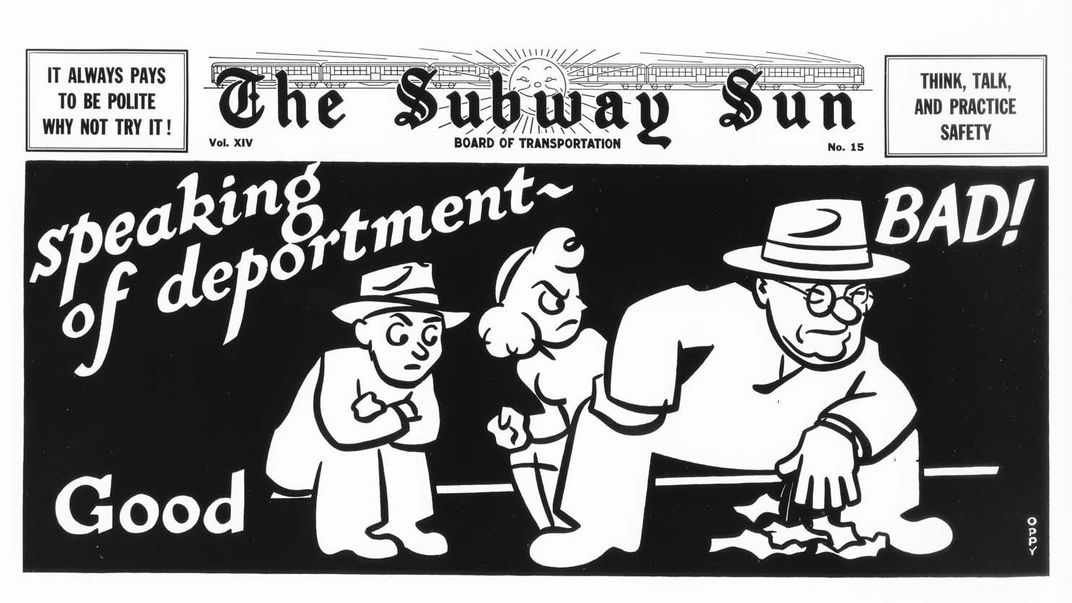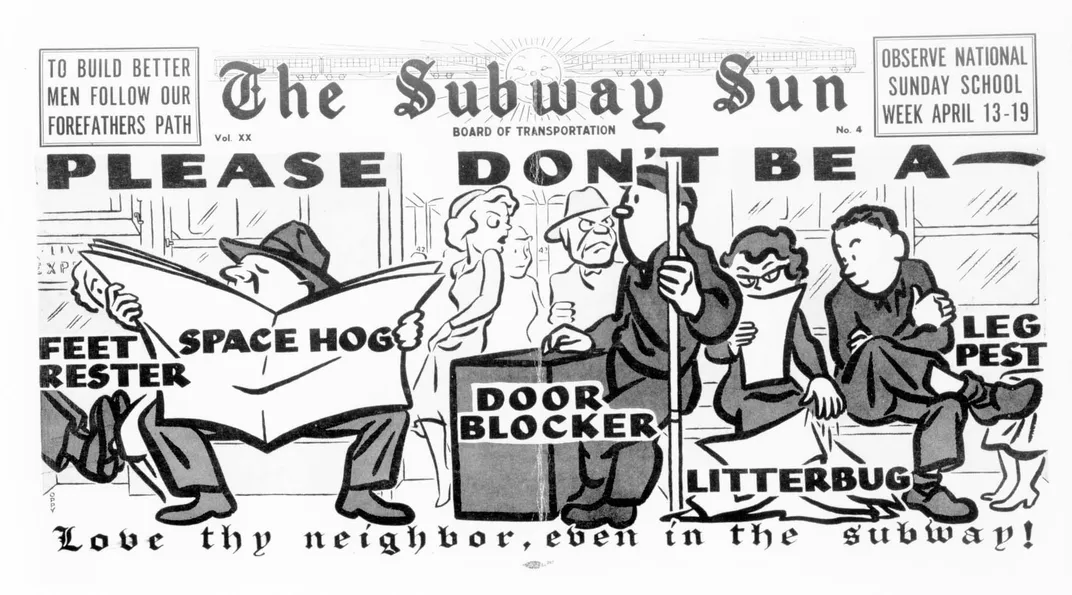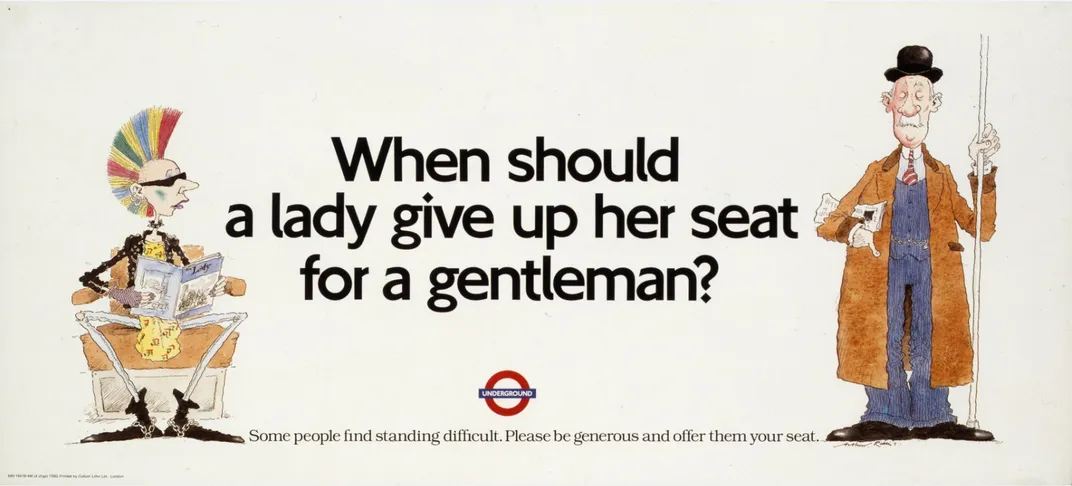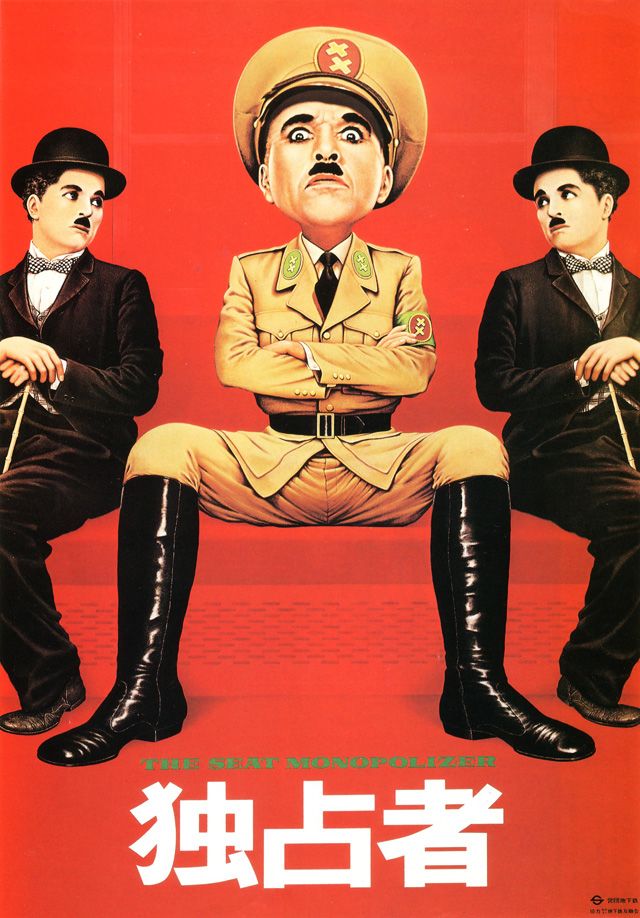New Exhibit Shows Manspreading Has Been Taking up Subway Space for Decades
Vintage ads show struggles with transit etiquette
Over the last two years, New York City’s subways and buses have sported ads by the Metropolitan Transportation Authority meant to encourage riders to be more polite on public transit. The ads feature simplified images of people modeling both good behavior (like giving up a seat for an elderly person) and bad (like performing acrobatic pole dances during rush hour). Out of all the impolite actions highlighted by the MTA, the focus on “manspreading” (men who take up too much room on the seats by spreading their legs wide) though was what quickly made the media rounds.
But the phenomenon is nothing new, Jordan Burchette reports for CNN, and a new exhibit of vintage ads from around the world at the New York Transit Museum shows how manspreading has roots that date back decades.
"There have been campaigns like this going back to almost the beginning of the subway," Rob Delbagno, Senior Manager of Exhibitions at the New York Transit Museum, tells Burchette. "We found stuff going back to 1915, and most of the problems they were talking about then were the same as now."
The exhibit features ads from the New York City subway, as well as those from transit systems around the globe that take on the chronic manspreading problem. From simple pronouncements that the behavior is bad to dubbing offenders with nicknames like “Leg Pest” and “Space Hog,” the wealth of ads seem to suggest that the flood of splayed knees plaguing the world’s public transportation might take a long time to take effect, Carey Dunne reports for Hyperallergic. Luckily, while manspreading has been a problem for decades, it’s not necessarily a lost cause.
"Spitting was big in the [1900s] and '20s when tuberculosis was a problem in the city. Now you don't have to tell people not to spit," Delbagno tells Burchette. "Human behavior changes slowly."
“Transit Etiquette or: How I Learned to Stop Spitting and Step Aside in 25 Languages” is on display at the New York Transit Museum through October 20, 2016.




